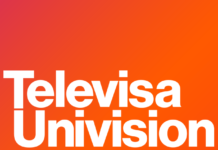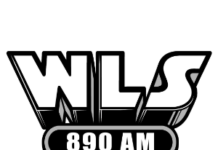
(By Mike McVay) We are living in a media rich environment. We have been for decades. Becoming richer every year as time goes on. Technological advances change how we entertain and inform ourselves. Those mediums that employ more senses create a greater experience for the listener or viewer. The noise level increases each year with more competition. That’s been a constant since electronic media first launched more than 100 years ago. It stands to reason that entertainment and information platforms will go through the lifecycle of all products. Introduction, Trial, Adoption, Growth, Maturation and … without evolution … decline. Where radio is today warrants, maybe even requires, evolution.
If you’ve been around for a while, you start to see a repetitive cycle of change come into view. One that shifts where an industry is and that prompts evolution. If not, it results in extinction. Every couple year’s we hear of the impending death of radio. I was on a plane thirty years ago when the person beside me asked what I was going to do in ten years when radio was dead. This person was a fan of AOL and excited about the infancy of the internet. That’s the same kind of person on a different flight who claimed to me that the CD would end radio as we know it. The iPod was next, Satellite Radio, Apple Music, DSP’s, Smart Speakers, Podcasts, TikTok, Clubhouse, and Amazon recently launched AMP, which is sure to be a disruptor. Looking around the corner is something called The Metaverse.
The list of threats to radio is long. It stands to reason that the list will continue to grow as more new inventions, developments, programs and competitors for the audiences’ time mounts up. These threats are not unique to radio. They’re threatening all forms of media. The more competitors in a category, the shorter the lifecycle for the product once it hits maturity. The ever-increasing speed of the lifecycle is why we just saw CNN+ launch and end before many of us had a chance to login to the app store.
Netflix, for the first time, showed a backslide on subscribers. The analysts are suggesting that one of Netflix’s issues, which is nowhere near going out of business, is that family members are sharing usernames and passwords with individuals outside the family, people are going back to work post-pandemic, and daily habits are changing. I’m sure that the causes they point to are true. What they’re not bellowing about, but one would think aware of, is increased competition and content that isn’t competition proof. The world is reopening and we’re starting to see time poverty reenter our lives.
All of the major Television networks have subscriptions services. The same for the major movie studios. Many of them also own television networks, cable companies, internet companies and mobile phone companies. There is a significant number of independent providers who vie for our time, too. Think about how your lives have changed now that many employers have revoked “Work from Home” in favor of bricks and mortar business. A return to work is a benefit to radio and we’re starting to see that in the ratings.
Then comes the cost of competition to the consumer. Not everyone can afford 5 or 10 subs at $4.99 to $9.99 a month. That’s where content really matters. If I’m going to pay for it, the content better be good. When Ozark is split into two shorter series versus running them together as one longer series, it prompts cancellations, and then renewing when the show comes back. NBC has been brilliant in how they’re handling This Is Us in its final season with 18 episodes. Yellowstone had 10 episodes. It left me wanting more, but I don’t know when I’ll be back to Paramount. If it’s good, it’s worth more. The radio example being those stations that repurpose the morning show, or parts of the morning show, into afternoons or evenings.
All of this leads back to where radio is today warranting, maybe even requiring, evolution. We have to stop living in the past. We have to stop complaining about things not being as good as they once were. Times have changed. Times are always changing. Our radio stations need to be fluid and we as operators, managers, revenue generators, marketers, engineers, promotors and talent need to be fluid.
AQH will continue to erode as there are more and more competitors for the audience’s time. That is unless your station can be so dynamic and so attractive that you take audience off the table of your competitor. Your content has to be the absolute best it can be, whether it’s live and local, syndicated, time shifted or voice-tracked. Stop-sets are too long. They should be less than half as long as they are now. I don’t see that changing anytime soon. All the more reason your content needs to be dynamic and attractive. We should be measured against enriched entertainment that is taking our audience away.
We need to embrace the environment in which our stations are heard. Smart Speakers, Amazon Echo and Google Home, brought radio back into the home and the workplace. Enhance each occasion of listening on a smart speaker with a gateway welcome and farewell message. Making your radio the source of entertainment and information on-demand, be it via podcast, the stations website or an app, allows the listener to time-shift your station. We are living in an on-demand world. Embrace it and take advantage of it. Be on as many apps as you can be on, unless you can own a dominant app, which then allows you to be exclusive.
Entertain where the audience uses radio the most. That means in-car. Jacobs Media has done a spectacular job as advocates for the industry in working with radio, the NAB and auto manufacturers in the battle to keep radio in the center stack. They’ve shown through their research that the connected car is the battlefield. Radio has to employ more than the sense of sound if we’re to have any advantage over the flood of content that is on the listeners smart phone … which in many cars connects automatically via Bluetooth when you enter your vehicle.
We cannot take an ostrich-like approach to in-car competition. A recent article targeting management in radio suggested the elimination of all messaging on the RDS display on the car radio, except for the station’s name/call-letters and frequency. The reasoning was that it is a distraction to the driver and it makes it difficult to remember and retain the station that’s being heard. Admittedly, if you’re in an older vehicle that has an RDS that looks like a news ticker in Times Square, then you should avoid clutter and make your message short. It is also true that frequency is important as 85% of rating diary entries include the frequency. It’s also true that 100% of all radios have the frequency prominently displayed on them.
For everyone else, recognize that we’re living in a world where one can put their text messages on the entertainment screen in their car, play music videos that accompany digital entertainment, play from the phone, view constant GPS to get to their destination while seeing what eateries are nearby. These can be distractions to the driver, but they can also be lifesavers, a connection to the people and places we love.
Quu is a new digital company that’s combining audio and visual to enhance the in-car radio experience for advertisers and listeners. This provides a way to enrich the listening experience in your car, enable greater connectivity with a station and a community, provide additional value for an advertiser and enable radio to use more than one sense. You can expect that the metaverse will be an even greater distraction for the audience. Don’t fight it. Fix what we have and be ready to embrace what’s next.





